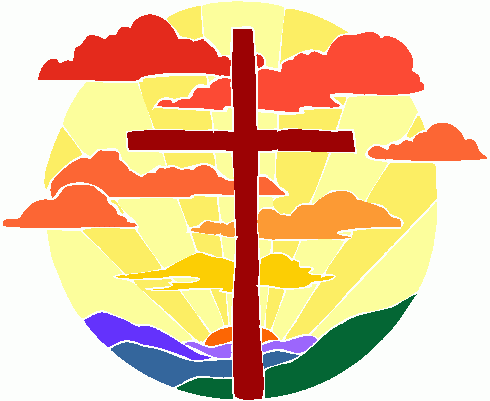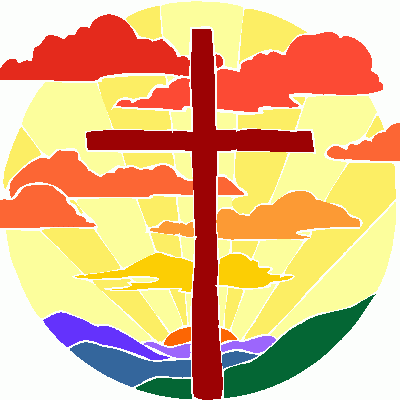Then God said, “Let Us make man in Our image, according to Our likeness; and let them rule over the fish of the sea and over the birds of the sky and over the cattle and over all the earth, and over every creeping thing that creeps on the earth.” God created man in His own image, in the image of God He created him; male and female He created them.
Genesis 1:26-27
The Hebrew word translated “image” is selem (or tselem). It could also be translated as “likeness” or “shadow”. The same word is sometimes used in reference to idols, as being images of the gods that they represent. Genesis 5:3 also uses it to say that Adam’s son Seth was in his (Adam’s) own image/likeness.
What do human beings have in common with God, that we would carry His image or be a likeness or shadow of Him? It must not be visual image: We don’t all look alike, so we can’t all look like He does. Besides, the Bible teaches that God is spirit; He doesn’t have a physical “look”.
Whatever is meant by “created in His own image”, it is something apart from all other animals. Only man (and woman) was specifically created in God’s image; the rest of creation was not. What attributes do we share with God, that animals do not?
To define the difference between human and animal, criteria like “language” or “use of tools” was once in vogue. That was before researchers learned more about how animals communicate (among themselves, and with humans) and how they use simple tools. The communication is not “War and Peace”, and the tools aren’t computers, cars, or chainsaws. But it does seem that language and tools are not the signs of mankind’s unique Imago Dei (Latin for our “image of God”).
In a previous post, I considered some of the attributes of God that can be deduced from what He created. Those included Self-existence, Power, Volition, Intelligence, Organization, Intricate Design, Communication, and Moral Standards. I don’t see all of these as part of our Imago Dei. We’re not self-existent and don’t individually have world-shaking power. We have intelligence, organization, and communication beyond that of animals in scale, but not necessarily unique from them in function. However, we do have volition, design (and also creativity), and moral conscience that are not seen in the animal kingdom. So I’ll work with those three for now. There is also a fourth: Man alone was delegated to rule over the rest of nature.
Volition
What seems to me most distinctive about humankind’s embodiment of God’s image is what I’m calling “volition”. It includes concepts like a sense of self-awareness, a will of our own, the ability and desire to make conscious choices about our life. We aren’t driven simply by instinct. We can reason, weigh the pros and cons, and make meaningful decisions. When we feel that our volition is inhibited for some reason — slavery, imprisonment, oppressive environment — we react strongly. Some may lash out in anger or violence, while others give up and sink into despair. We do NOT like any infringement upon this part of ourselves!
Of course, this part is also precisely why it is possible for us to be sinners. When it came to a choice, Adam and Eve followed their own will instead of God’s 1. If they had been like the rest of the animal kingdom, it would never have even occurred to them to disobey.
That problem didn’t stop with Adam and Eve, either. I’m right in there with them, wanting my own way, barely restraining myself from stomping my foot like a toddler when I don’t get it. You might as well admit it: You are, too! 🙂
Design and Creativity
Another way that we express God’s image is in our creativity. We love to make things. Think of the design involved a clock mechanism, for instance, or in a woven tapestry. From art and music, to buildings and bridges, to websites and cellphones, to gardens and parks, to machines and robots, to so many things — the list of inventions and designs that humans have come up with is astounding. One of our happiest moments is being able to say “Hey, look what I made!”
The downside of this creativity is when we use it for harm. We’ve invented some awfully well-designed weapons, and have found terribly ingenious ways to impose our will on others. We conveniently overlook the fact that those “others” also bear their own Imago Dei that makes them infinitely valuable to God.
Moral Conscience
God definitely expresses His concept of right and wrong. It is built into His very nature: He can’t not love; He can’t allow injustice to go unpunished; He can’t tolerate deception. Humans reflect that image in the way we react to hatred, injustice, or deceit. Animals may act like, well, animals…but there is no expectation that they “should” behave any other way. We expect better of ourselves.
Even when we are the ones doing the hating, abusing, or lying — we still know that it’s wrong. If we try, we are capable of overruling the moral image that is embedded within us. We can even convince ourselves that the image is wrong, or imaginary, or doesn’t apply to us this time. But that image is still there, reminding us that we are meant to be acting as God would. We are each responsible to Him for tarnishing His image in us.
Rule Over Nature
I love to watch those “behind the scenes at the zoo” shows on TV. I’m always impressed with how much the keepers care for their animals. They know their charges intimately, recognize when something is wrong with them, and will do everything in their power to correct the problem. They go out of their way to provide what they call “enrichment”, to make sure their animals are as fulfilled as possible in a zoo setting. They cry when a sick or injured animal must be euthanized, but they will do so because it is in the best interest of that animal, to prevent it from suffering any more than necessary. The image of God in mankind includes the responsibility for us to take that kind of care of all of nature. “Rule over” or “have dominion over” doesn’t mean bully or abuse; it means steward and caretaker.
Those who bemoan animal or environmental mistreatment have plenty in common with Christians on this point. Where we part ways is when anyone puts an animal or the environment at even higher priority than God, or than His image-bearers. Part of being caretakers is the mandate to use all resources responsibly…but we are still to use them rather than worship them.
Broken Image
For each of the above points, we can see that the image of God is mankind at its highest and best. But we can also see how that image has been twisted and broken. That tension — created in God’s image but now fallen and flawed — explains so much in our world. People risk their lives to rescue others in danger, give money and time to help after disasters, and provide any number of shelters and safe places for the needy. But people also lie, cheat, hate, and kill. What other worldview equally explains both aspects of what it means to be human?
Perfect Image
Jesus came as the perfect, unbroken, complete image of God (Colossians 1:15). He’s not made in God’s image; He IS God’s image! He provides the way for anyone’s broken image to be repaired if they accept His gift. The repair is not complete overnight. (I’m proof of that!) But He assures us that someday all will be put back as it is meant to be. The image will be polished until it becomes a pure reflection of God…in us!
God, after He spoke long ago to the fathers in the prophets in many portions and in many ways, in these last days has spoken to us in His Son, whom He appointed heir of all things, through whom also He made the world. And He is the radiance of His glory and the exact representation of His nature, and upholds all things by the word of His power. When He had made purification of sins, He sat down at the right hand of the Majesty on high…
Hebrews 1:1-3
Footnotes and Scripture References
- See more on this in the article “Knowledge of Good and Evil“.


